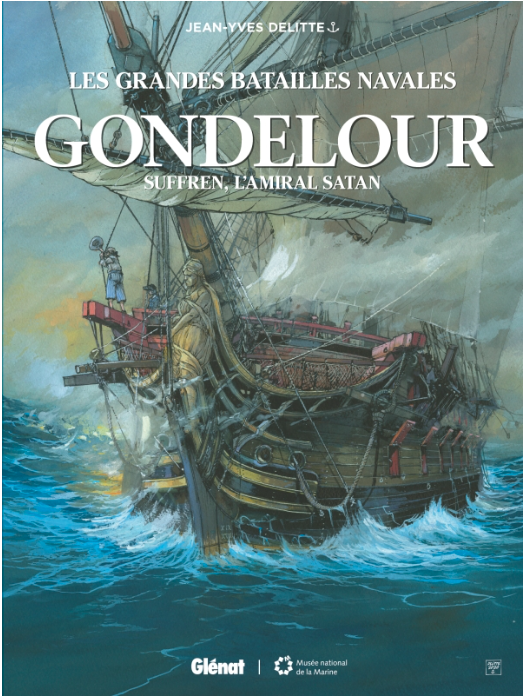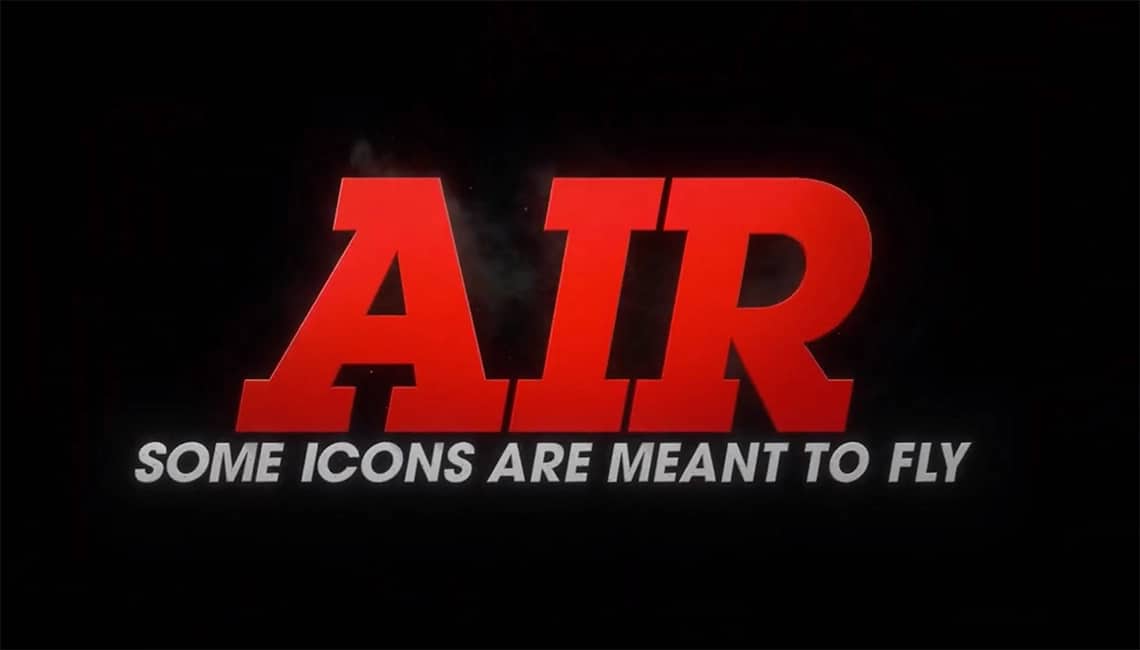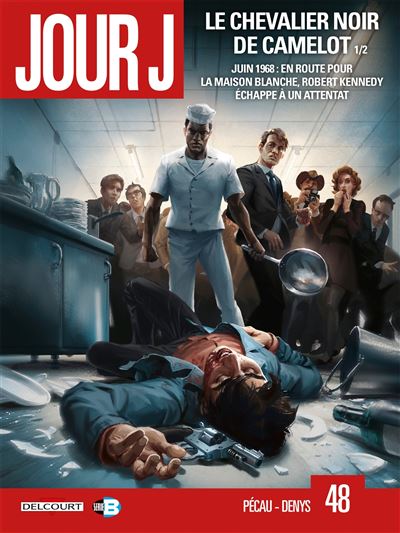From the collection Les grandes batailles navales, Gondelour tells us about a battle that is now little known and made Suffren a major admiral of the French navy. Take to the sea with him to live from the inside a fight of theeighteenth century.
Gondelour: The Great Naval Battles
With fourteen titles and two new volumes just released, this collection takes you on a journey into naval battles from history from Antiquity to the Second World War. It is also a co-edition of Glénat and the Musée national de la Marine. Entirely scripted by Jean-Yves Delitte, he joins forces with a different artist for each album and writes a complete documentary file at the end of each volume. As the preface of the Curator General of Heritage also shows, we are fully in a historical comic that seeks to instruct the reader. In this new title, we find it in an abundant drawing with very present dialogues that give valuable information to understand the complex issues of a little-known battle. 
A battle off the coast of India
Gondelour is a special title in the collection because it is also designed by Jean-Yves Delitte as if he wanted to be sure to be the only master on board. Is it for the separate career of Pierre André de Suffren? In 1781, this man already had a lot of experience but his career was at a standstill. Corpulent and ill-cared for, he also had a capricious mood and outspokenness that did not suit the Court. When the American War of Independence was launched, he thought the time had come to demonstrate his talent. Casting off for the Indian Ocean, Suffren was tasked with disrupting English trade in this region and thus pushing the kingdom to grant independence to its American colonies. This man confided in the spirit of honor and glory refuses the new rules that aim to keep admirals away from the battle to protect them. In his notebook, he writes that he is ready to do anything to finally access the glorious function he desires. As rumors of peace grow, Suffren stubbornly insists on honor and prefers to accelerate the confrontation rather than verify this information. Gondelour narrates the clashes off India between England and France on a flank of the American War of Independence. We also discover the role of neutral countries. A Danish captain gives information to the English in exchange for money. The varied layout makes it possible to show the ships in action in double pages and, by dense boxes, the dialogues between admirals. The screenplay brilliantly avoids the lies of the historical novel. We are far from the lace war often presented for theeighteenth century. The fighting is appalling because to be well adjusted the shots must be very close to the fragile wooden ships. In addition, powerful cannons maim or kill en masse. Blood is all over the first pages. There is no idealization of Suffren opting for legal warfare or becoming a privateer according to his tactical advantages. 
A precipitate of society
This battle is also a way of describing the old regime. The boats are a reflection of this unequal society. The poorly paid but supportive sailors take all the risks on the masts or during the fights. They have no patriotic spirit but especially want to avoid dying while noble admirals think only of honor. Because of the competition between different personal networks, Suffren wrote to the Minister of Foreign Affairs rather than to the Minister of the Navy. Between these two poles, lieutenants, often from the middle nobility, are despised by generals because these cadets have opted for the army rather than religion. More open to modernity, one of them is interested in the philosophers of the Enlightenment. Having closed Gondelour, the reader spent a momentous time discovering the horror of the naval war of theeighteenth century. He has suffered with the various characters, invented or historical, of the story and may be shocked by this strategically unnecessary battle. He also learned a lot about the career of the ambitious Suffren and about the society that would be totally transformed by the coming French Revolution. If you want to discover the more adventurous side of the screenwriter, you can follow this link.





































